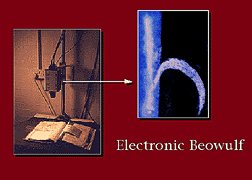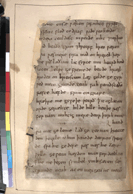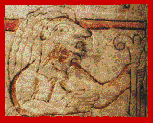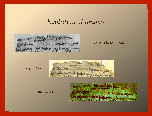
 OVERVIEW
OVERVIEW
"The Electronic Beowulf Project" has assembled a huge
database of digital images of the Beowulf manuscript
and related manuscripts and printed texts. The
archive already includes fiber-optic readings of
hidden letters and ultraviolet readings of erased text
in the early 11th-century manuscript; full electronic
facsimiles of the indispensable 18th-century
transcripts of the manuscript; and selections from important 19th-century collations, editions, and
translations. Major additions will include images of
contemporary manuscript illuminations and material
culture, and links with the Toronto Dictionary of Old
English project and with the comprehensive Anglo-Saxon
bibliographies of the Old English Newsletter.
The project has been developed by The Library with two leading
American Anglo-Saxon experts, Kevin Kiernan of the University of
Kentucky and Paul Szarmach of the Medieval Institute, Western Michigan
University. Professor Kiernan is editing the electronic archive and
is producing a CD-ROM electronic facsimile that will draw together in
an easy-to-use package all the different types of image being
collected.
 GRENDL
GRENDL <---(Click here for an enlarged image)
<---(Click here for an enlarged image) The test image files now on the Internet were mounted to coincide with the publication by the Association of Research Libraries of a paper, Digital Preservation, Restoration, and Dissemination of Medieval Manuscripts, by Kevin S. Kiernan describing the project. The image files have been mounted on two sites, one at the University of Kentucky and another in The British Library. These images are for personal use only, and may not be reproduced in any form without the permission of the British Library.
Professor Kiernan's paper is also published in Scholarly Publishing on the Electronic Networks: Proceedings of the Third Symposium, eds. A. Okerson and D. Mogge, published by the Association of Research Libraries, Office of Scientific and Academic Publishing, 21 Dupont Circle, Washington DC 20036, USA. For the current status of the project see Kiernan, "The Electronic Beowulf," Computers in Libraries (February 1995), 14-15. For additional information you may contact kiernan@beowulf.engl.uky.edu.
Copyright © 1995, The British Library Board

